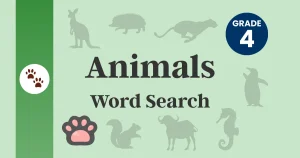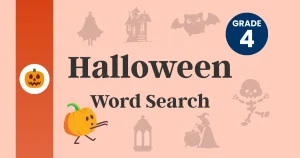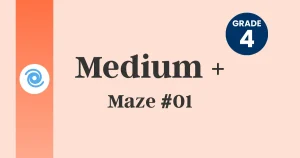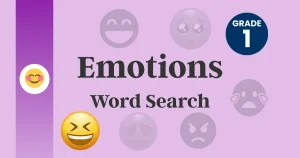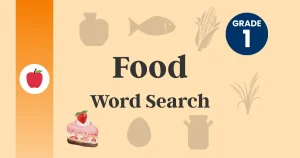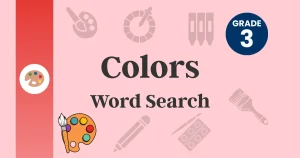🌊 Overview
The ocean covers more than 70% of Earth’s surface and is home to an incredible variety of life and natural phenomena. This Grade 4 Ocean Word Search challenges learners with eighteen terms that connect marine animals, ecosystems, and geographic features. By exploring these words, students not only strengthen spelling but also deepen their understanding of the oceans that sustain life on our planet.
🎮 How to Play
- Review the list of eighteen ocean-themed words.
- Search the puzzle grid carefully; words may appear horizontally, vertically, or diagonally.
- Highlight or circle each word once you find it.
- Some words are scientific and longer—scan thoroughly in all directions.
- Check the printable answer key when you are finished.
🎯 Learning Goals / Skills
- Practice accurate spelling of marine biology and geography vocabulary.
- Increase awareness of ocean ecosystems and their role in global life.
- Strengthen focus and visual scanning strategies.
- Connect language learning with environmental science and conservation.
📖 Word List + Mini-Glossary
- DOLPHIN — intelligent marine mammals known for playful behavior.
- WHALE — the largest animals on Earth, feeding on fish or plankton.
- SHARK — powerful predators that maintain balance in ocean food chains.
- OCTOPUS — eight-armed mollusk with problem-solving skills.
- CORAL — living organisms forming reefs that support countless species.
- PLANKTON — microscopic plants and animals that form the base of the food web.
- CURRENT — continuous flow of seawater that shapes climate and ecosystems.
- TIDAL — related to the rise and fall of sea levels caused by the Moon.
- ISLAND — a piece of land surrounded by water.
- KELP — large seaweed forming underwater forests.
- TRENCH — the deepest parts of the ocean floor, like the Mariana Trench.
- SEAGULL — seabirds often seen near coasts and harbors.
- NARWHAL — Arctic whales with long spiral tusks, sometimes called “unicorns of the sea.”
- ANCHOR — heavy object used to hold ships in place.
- HARBOR — a sheltered area of water where ships dock safely.
- ESTUARIES — coastal areas where rivers meet the sea, rich in nutrients.
- BARNACLE — small crustaceans that attach to rocks, boats, or whales.
- SEAHORSE — tiny fish with a horse-like head, famous for unique parenting roles.
👩🏫 Teacher Tips
- Science Connection: Use the glossary to introduce marine ecosystems, such as coral reefs and plankton food webs.
- Geography Link: Discuss famous trenches, islands, and harbors on a world map.
- Art & Writing: Have students draw an ocean habitat and label animals or features from the word list.
- Conservation Focus: Talk about human impacts—such as pollution or overfishing—and how protecting oceans is vital for future generations.
🖨 Printable & Answer Key Notes
The Grade 4 Ocean puzzle is more advanced, featuring longer scientific terms and diagonal placements for greater challenge. The “Print Blank” worksheet serves as a classroom activity or homework assignment, while the “Print with Answers” sheet supports easy correction. Parents and teachers can use the answer key to extend discussions into marine biology and environmental awareness.
